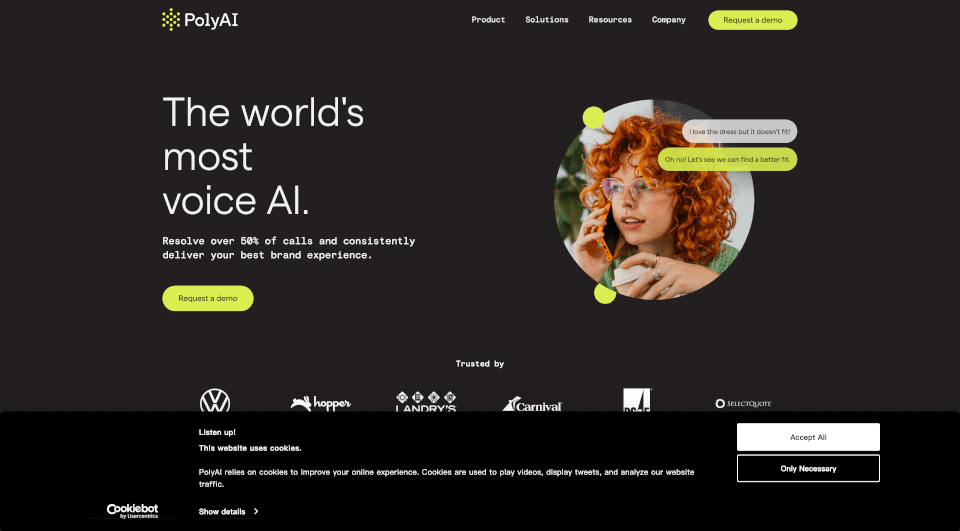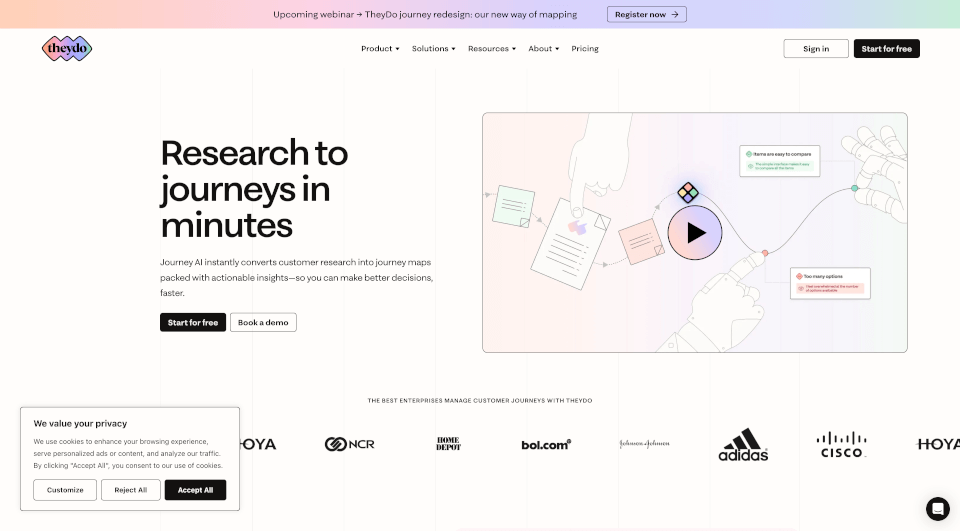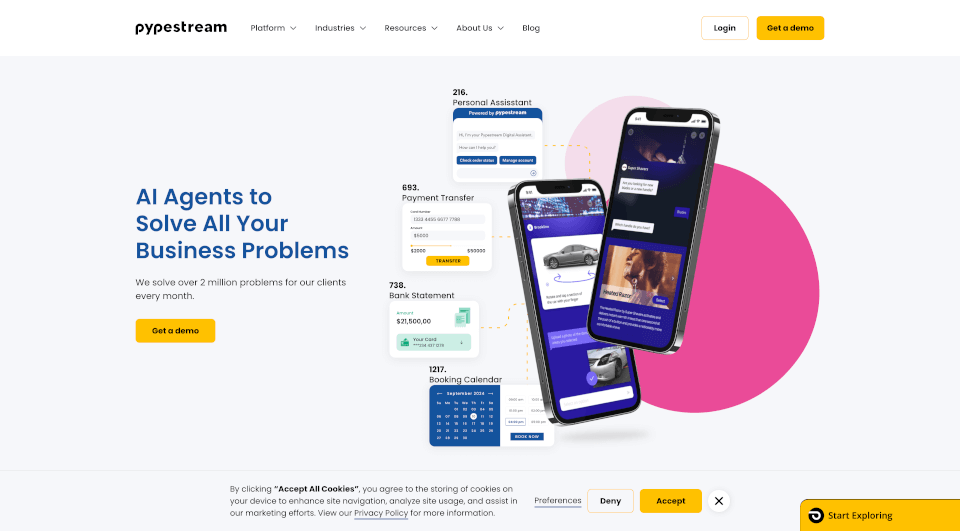What is PolyAI?
PolyAI is revolutionizing customer experience through its dynamic voice AI technology. This platform is engineered to handle customer interactions naturally, enhancing engagement and efficiency. With an ability to resolve over 50% of calls, PolyAI ensures that businesses can maintain a high standard of customer service while managing operational costs. By facilitating seamless communication, companies can build trust and uphold a superior brand experience for their customers.
What are the features of PolyAI?
Conversational AI: At the heart of PolyAI is an advanced conversational AI that understands natural language. It allows customers to speak as they normally would, making interactions smooth and intuitive.
Multilingual Support: PolyAI supports 12 languages, enabling businesses to engage a global audience without compromising on quality of service. This feature is particularly beneficial for companies operating in diverse markets.
Integration Friendly: The platform integrates effortlessly with existing tech stacks, minimizing the risks associated with replatforming. This ensures that businesses can implement PolyAI without disrupting their current systems.
Real-time Analytics: PolyAI provides businesses with a real-time dashboard presenting actionable insights derived from customer interactions. This data helps in identifying trends, issues, and opportunities for improvement.
Continuous Learning: The AI system is designed to evolve continuously. With ongoing performance updates and maintenance controls, PolyAI improves its responses based on real conversations over time.
Customization: Businesses can design a branded voice and personality for their voice assistant, ensuring consistent brand representation in every customer engagement.
24/7 Availability: The persistent operation of PolyAI enables businesses to provide support around the clock, catering to customers whenever they need assistance.
What are the characteristics of PolyAI?
Dynamic and Engaging: PolyAI's voice technology provides a lively and engaging interaction, making customers feel heard and valued. The ability to handle interruptions and topic changes contributes to a natural conversation flow.
High Capacity Handling: PolyAI can manage complex inquiries and a larger volume of interactions, significantly reducing the need for additional staffing during peak times, which leads to cost savings.
Enhanced Customer Satisfaction: By minimizing wait times and eliminating misroutes, businesses witness an impressive increase in Customer Satisfaction Scores (CSAT) and Net Promoter Scores (NPS).
Revenue Generation: The capability to respond to 100% of customer inquiries enhances engagement, leading to increased customer loyalty and retention, ultimately generating more revenue.
Empowered Agents: With PolyAI managing routine inquiries, human agents can focus on more meaningful tasks, reducing turnover and improving job satisfaction.
What are the use cases of PolyAI?
Customer Service: PolyAI excels in handling customer inquiries, from account management to troubleshooting, ensuring that customers receive prompt assistance without long wait times.
E-commerce Solutions: Retail brands can utilize PolyAI for order management and billing queries, streamlining purchase processes and enhancing user experience.
Healthcare Support: Healthcare providers trust PolyAI with customer interactions, where the AI assists in scheduling appointments, providing insurance information, and handling inquiries related to patient services.
Travel and Hospitality: In the hotel and restaurant industry, PolyAI can facilitate booking and reservation management, leading to improved operational efficiency.
Telecommunications: Companies in the telecom sector benefit from PolyAI’s voice AI for addressing customer issues related to account management, authentication, and service inquiries.
Insurance: PolyAI can streamline the complexities of insurance inquiries, providing support for claims, policy management, and general information.
How to use PolyAI?
To get started with PolyAI, businesses should follow these steps:
-
Consultation: Begin with a consultation to discuss specific needs and goals for customer interactions.
-
Customization: Collaborate with the PolyAI team to design a conversational voice and personality that aligns with the brand’s identity.
-
Integration: Implement PolyAI by integrating it with existing systems and processes. Work with technical teams for a seamless transition.
-
Deployment: Deploy the voice assistant in a controlled environment to monitor its performance before a full-scale launch.
-
Training: Utilize available resources and analytics to train the voice assistant, ensuring it understands customer needs effectively.
-
Maintenance and Monitoring: Continuously monitor the system, analyze conversations, and implement updates to optimize performance.








